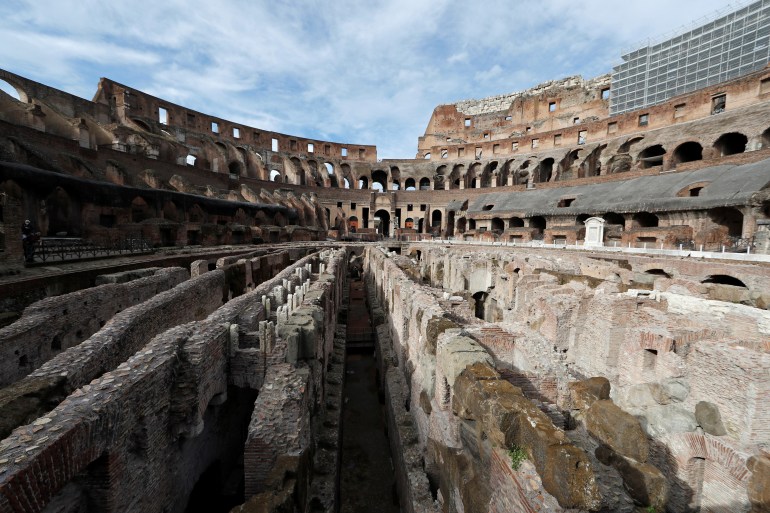Italy plans new floor for 2,000-year-old Colosseum
The project will give visitors a sense of what it was like when gladiators fought in the Roman arena.

The ancient Roman Colosseum will once again have a floor thanks to a new, hi-tech project which Italy’s culture ministry has announced.
“It is an extraordinary project,” Culture Minister Dario Franceschini said on Sunday as he explained plans to create a flexible floor to give visitors a better sense of how the arena would have looked when gladiators fought to the death in front of crowds of spectators and dignitaries.
Keep reading
list of 4 itemsMore than 800 migrants rescued in Mediterranean head to Italy
Draghi unveils Italy recovery plan targeting women, youth, south
The human cost of Italy’s quarantine boats
“It will allow you to see the majesty of the Colosseum from the centre (of the arena),” he said in a tweet in which he also shared a simulation of what the new floor will look like.
The last floor was removed by archaeologists in the 19th century so they could get a better look at the labyrinth of rooms and corridors that lay below the arena.

It was never fully replaced and people are only able to walk around the edges of the building and look down on the ruins of the underground chambers where gladiators and animals awaited their brutal contest.
An Italian engineering firm, Milan Ingegneria, won the 18.5 million euro ($22.2 million) contract to design the new flooring and has promised to complete the project by 2023.
The wooden platform will be made up of hundreds of slats that can be rotated to bring natural light into the underground rooms.
The Colosseum is Italy’s most popular tourist attraction, and drew some 7.6 million visitors in 2019, before the coronavirus struck.
Il #Colosseo tornerà ad avere la sua arena. Dopo anni di studi è stato proclamato il progetto vincitore. Sarà reversibile, consentirà di visitare i sotterranei e di vedere la maestosità del Colosseo dal centro, come è stato per secoli sino a fine ‘800 https://t.co/DG6UOKRcB4 pic.twitter.com/dI9XtY9dxV
— Dario Franceschini (@dariofrance) May 2, 2021
[Translation: The Colosseum will have its arena again. After years of study, we have a winning project. It will be reversible and allow you to visit the underground (chambers) as well as to see the majesty of the Colosseum from its centre as it was for centuries until the end of the 19th century.]
Built 2,000 years ago, the stone arena was the biggest amphitheatre in the Roman empire, which once stretched as far as Britain, Egypt and Turkey.
It used to have up to 70,000 seats and hosted gladiator fights, executions and animal hunts.
It could also be filled with water to re-enact sea battles.